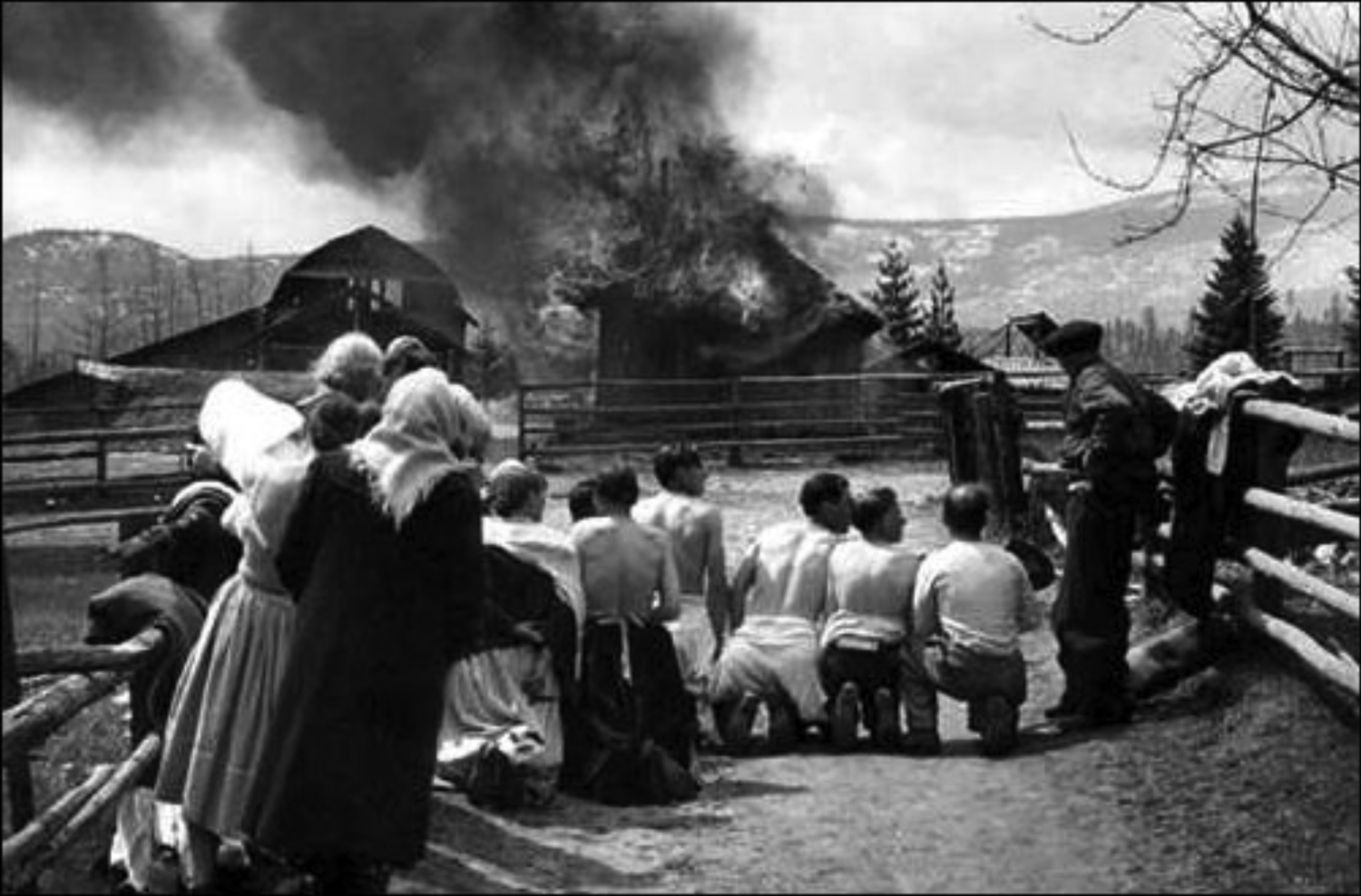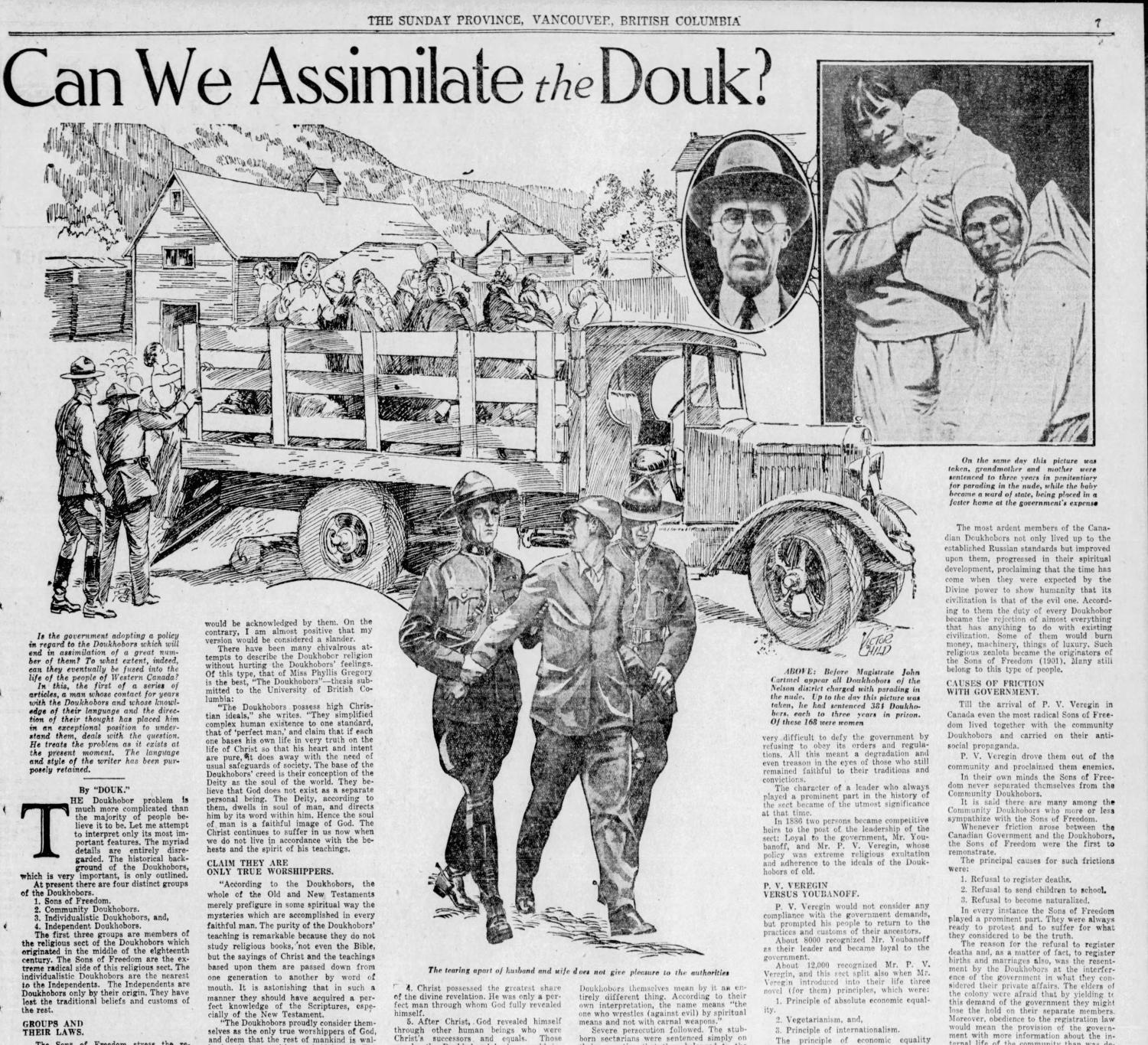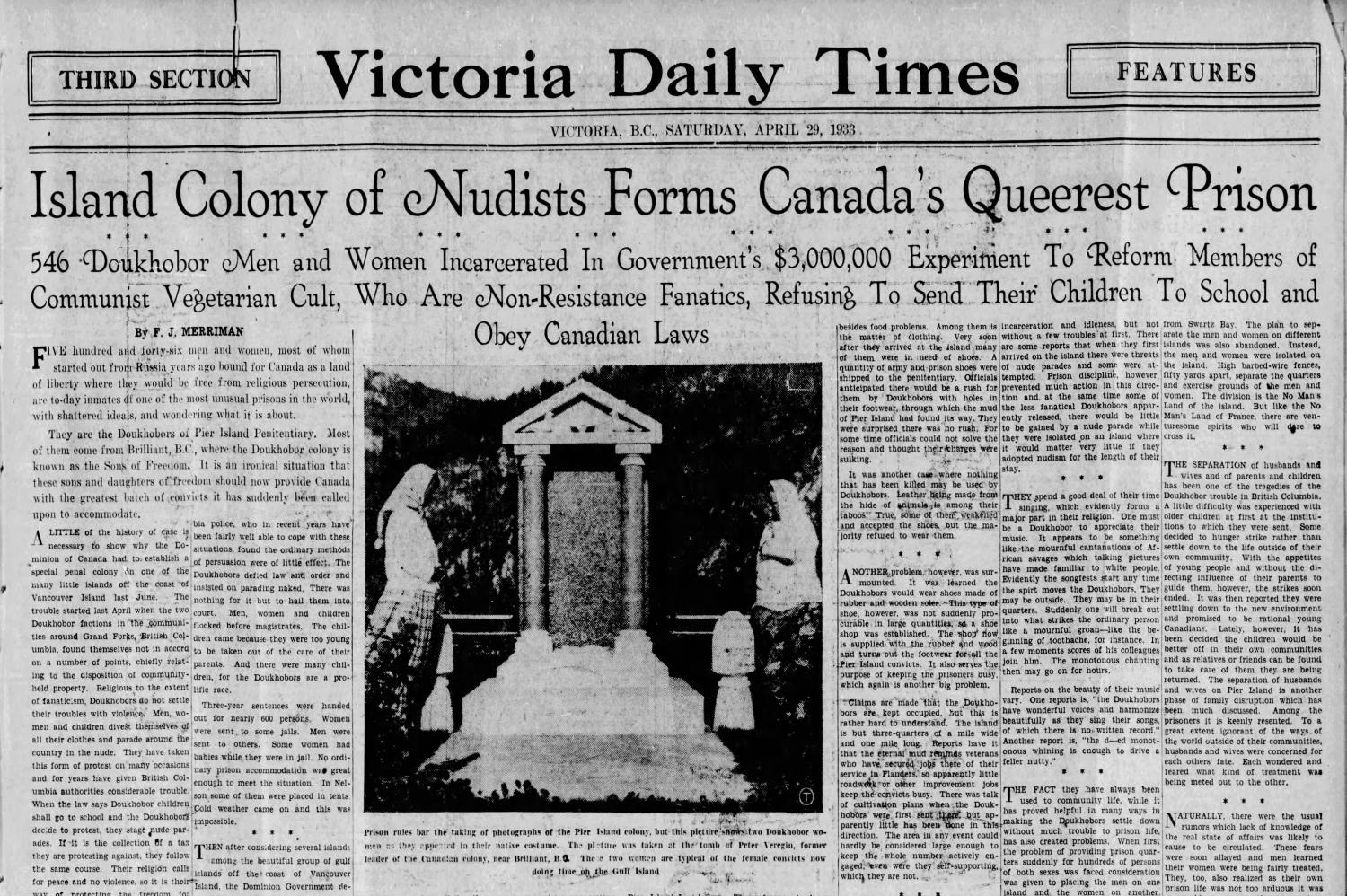Doukhobors Protest
A religious immigrant group finds itself at odds with the government
Date: 1929
In the early 20th century, a group of Russian spiritual Christians arrived in eastern British Columbia. The Doukhobors, as they were known, had been forced from their home across the world. They came to Canada in pursuit of religious freedom but, within a matter of years, their idiosyncratic set of beliefs and practices would make them the target of the Canadian government as well.
The group had emerged in southern Russia centuries earlier, its followers mostly peasants. Their practice centered on pacifism and a personal connection to god, and how they viewed the Bible as more of a historical than holy text. It rendered them iconoclasts in the eyes of the Russian Orthodox church. In 1785, an archbishop derided the group as Doukhobors, or “Spirit-Wrestlers”: a name they happily adopted.
In the late 19th century, a new leader pushed the Doukhobors to adopt stricter practices: a more communal form of living and the avoidance of meat, alcohol and tobacco. By 1897, the tsar had seen enough of their confounding insularity, their refusal to enlist in the military and their rejection of secular governance. He forced them to leave.
Over the next several years, 8,000 Doukhobors would make their way to Canada. Their relocation — the largest single mass migration in Canadian history — was made possible in part by a fundraising campaign led by Russian novelist Leo Tolstoy. At first, the Doukhobors would go to Saskatchewan. But in 1908, 6,000 would head further west to settle on land purchased near Grand Forks and Nelson, in the Kootenay region of British Columbia. There, they established self-sufficient communities with orchards and brickyards and a flourishing jam factory.
And yet friction with the government and non-Doukhobor neighbours had followed the community. As pacifists, they were exempt from conscription during both world wars, a distinction that lost them enfranchisement during the conflicts and earned the Doukhobors the resentment of returning veterans.
In 1929, the group began protesting against the use of tax money to fund the military, with hundreds of Doukhobors and their families participating, including the family of the mother of author Vera Maloff. “They were quite willing to pay taxes for hospitals and roads,” Maloff said, “but they wanted their portion of taxes to not go toward the military.” The government retaliated with an array of harsh punishments, ranging from mass internment in an abandoned logging camp near Nelson, to family separation. Maloff’s mother was taken from her family for a year and sent to the Industrial School for Girls in Vancouver. For organizing, her grandfather was sent to Oakalla Prison in Burnaby, and later the federal prison in New Westminster. Her grandmother and great-grandparents, meanwhile, would be some of the hundreds sent to the newly-established Piers Island Penitentiary off of Vancouver Island. “They were scattered,” Maloff said, “and my mother didn’t know why they were taken away.”
Those most at odds with mainstream Canadian society were the Freedomites or Sons of Freedom, a radicalized Doukhobor minority that had emerged at the turn of the century. While small, with each stumbling block Doukhobors faced in their new home — crop failures in the 1920s, imposed austerities and economic instability in the 1930s — membership of the fringe group grew.
Their methods of protest became increasingly incendiary, as well. The nude marches that had regularly occurred prior to 1929 would by the 1950s be accompanied by arson and violence. They detonated bombs at railways and schools. At the height of the conflict, government officials again apprehended Doukhobor children, placing them for several years in an old tuberculosis sanatorium that had been converted into a school.
The Sons of Freedom drama monopolized the media’s coverage of the Doukhobors; most Canadians would grow to associate the Russian spiritual Christians with scenes of mass nudity and barns on fire. Yet, these scenes were not representative of the broader community. Indeed, the fanaticism of the Sons, coupled with other hardships, had created rifts among Doukhobors decades earlier. Their unique system of communal living was all but abandoned in the 1930s when foreclosure forced them to give up their land.
Nevertheless, the bad luck would change. New leadership would buy back the land in the 1960s, and a resurgence of interest in the religion and culture would occur. Today, 20,000 Doukhobor descendants live in Canada, although only one third actively practice. But like before, pacifism remains central to their beliefs — aspiring, as one leader once put it, to “toil and peaceful life.”
Sources:
1. Kryak, Violetta. Are Doukhobors Dying out? In Rural B.C., a Sect Tries to Stop Their Faith from Fading Away. The Globe and Mail, 9 Sept. 2018, www.theglobeandmail.com/canada/british-columbia/article-are-doukhobors-dying-out-in-rural-bc-a-sect-tries-to-stop-their/.
2. Rak, Julie, and George Woodcock. Doukhobors. The Canadian Encyclopedia, 22 Aug. 2013, www.thecanadianencyclopedia.ca/en/article/doukhobors.
3. Scott, Andrew. The Promise of Paradise: Utopian Communities in British Columbia. Harbour Publishing, 2017.
4. Interview with Vera Maloff on March 19, 2021.






